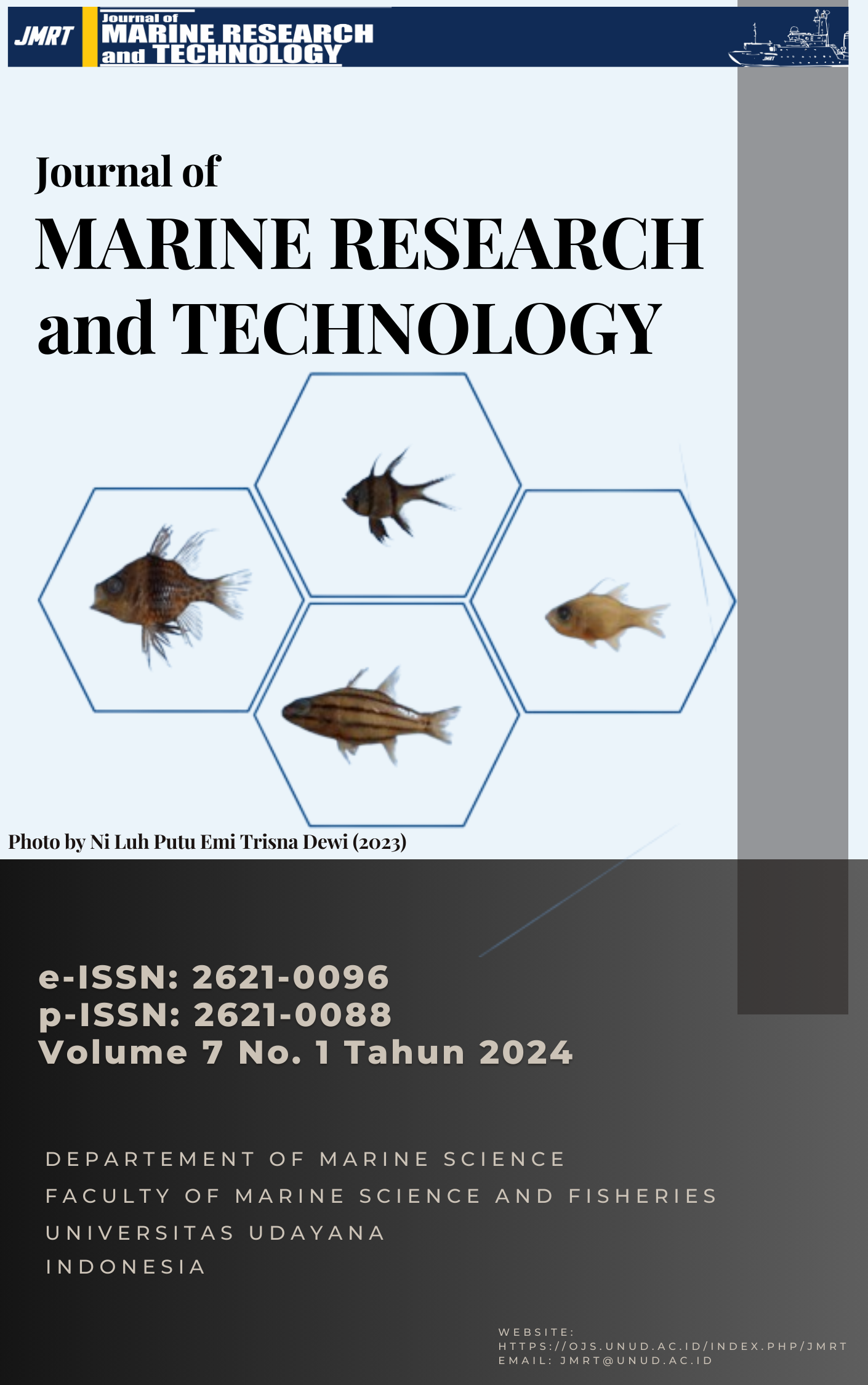Laju Pertumbuhan dan Tingkat Kelangsungan Hidup Karang Jenis Acropora formosa dan Acropora intermedia Menggunakan Metode Transplantasi Modul Rangka Spider di Perairan Pantai Lipah, Desa Bunutan Kabupaten Karangasem, Bali
A. formosa; A. intermedia; Laju pertumbuhan; Ramgka spider; Tingkat Kelangsungan Hidup.
Abstrak
Pantai Lipah menyimpan potensi terumbu karang, namun tergolong sedang karena aktifitas destruktif antropogenik. Metode rangka spider menjadi upaya rehabilitas karang di Pantai Lipah. Selain biaya material yang murah, rangka spider dapat memberikan alur air. Keberhasilan rehabilitasi karang, dapat diukur dengan melihat laju pertumbuhan dan tingkat kelangsungan hidup karang yang ditransplantasi. Karang genus Acropora memiliki kecepatan pertumbuhan yang tinggi dan tingkat ketahanan hidup yang besar termasuk karang jenis A. formosa dan A.intermedia. Kedua karang ini memiliki nilai estetika tinggi namun terancam tereksploitasi yang masih diperdagangkan. Penelitian bertujuan untuk mengetahui laju pertumbuhan dan tingkat kelangsungan hidup karang A. formosa dan A.intermedia yang ditransplantasi menggunakan metode rangka spider. Metode yang digunakan adalah metode eksperimental dengan observasi langsung. Masing-masing A.formosa dan A.intermedia berjumlah 20 fragmen, sehingga total 40 fragmen yang ditransplantasi. Penelitian diakukan selama 4 bulan untuk mengamati laju pertumbuhan dan tingkat kelangsungan hidup karang serta pengambilan parameter kualitas air laut untuk mengetahui kondisi parameter di setiap bulannya. Hasil penelitian yaitu laju pertumbuhan A. intermedia sebesar 0,81 cm/bulan lebih tinggi dibanding A. formosa yaitu sebesar 0,73 cm/bulan dan tingkat kelangsungan hidup karang A.formosa lebih tinggi 75% dibandingkan dengan A.intermedia sebesar 70%. Hingga akhir penelitian, tersisa 15 fragmen karang A. formosa dan 14 fragmen A. intermedia
##plugins.generic.usageStats.downloads##
Copyright Notice
The copyright to this article is transferred to Journal of Marine Research and Technology (JMRT). The copyright transfer covers the exclusive right and license to reproduce, publish, distribute and archive the article in all forms and media of expression now known or developed in the future, including reprints, translations, photographic reproductions, microform, electronic form (offline, online) or any other reproductions of similar nature.



